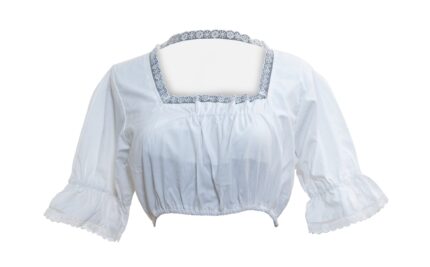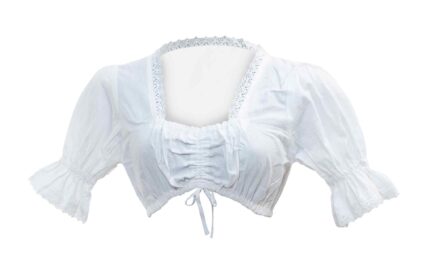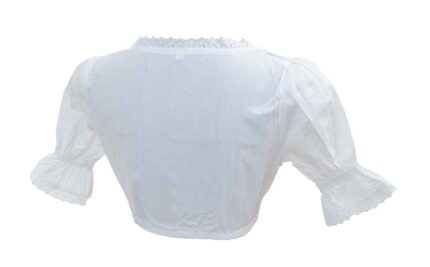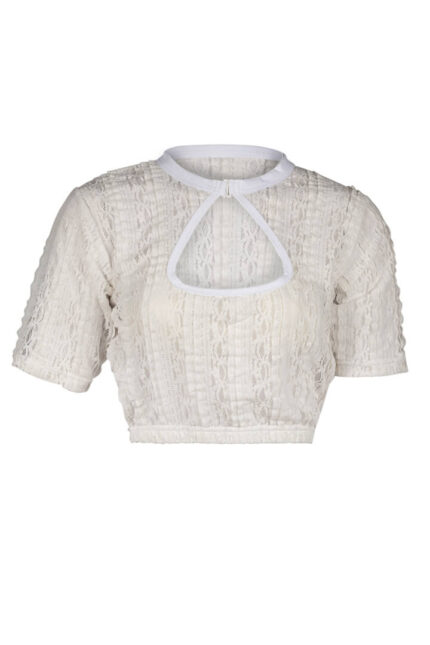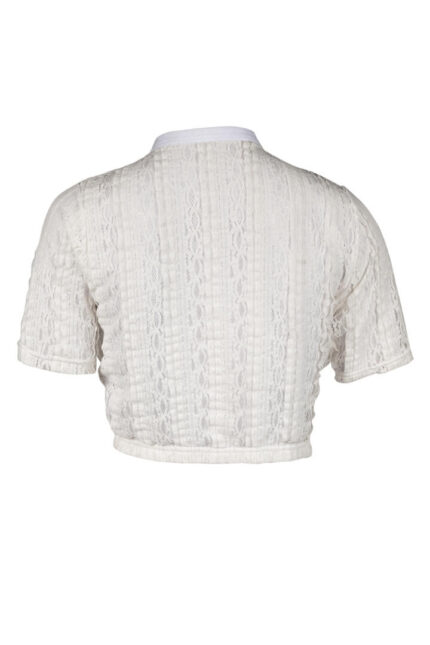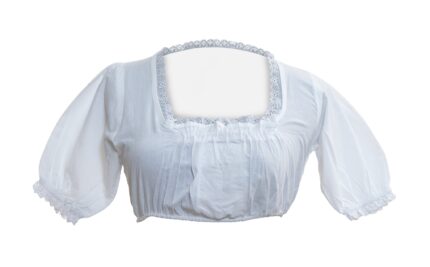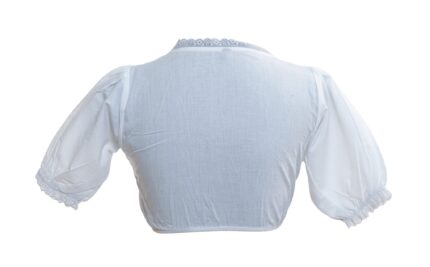German Blouse (Bluse): A Timeless Symbol of Bavarian Tradition and Style
The German blouse, known locally as the Bluse, is an essential element of traditional Bavarian clothing and a defining feature of women’s fashion during Oktoberfest and other cultural celebrations. Worn beneath the Dirndl dress, the Dirndl blouse adds a delicate and elegant touch to the ensemble while showcasing the historical and cultural roots of German heritage. Far beyond being a fashion accessory, the German blouse carries with it centuries of meaning, craftsmanship, and regional pride. Its evolution from rural workwear to festive attire reflects the changing but enduring identity of women in Bavarian and Alpine culture.
Origins of the Traditional German Blouse
The history of the German blouse dates back to the 19th century, when women in Alpine farming communities needed practical, breathable clothing that could withstand daily chores. The early blouses were typically made of cotton or linen, with simple cuts and modest designs. They were functional garments used for work and family life. Over time, especially as the Dirndl dress became associated with regional festivals and formal occasions, the blouse transitioned from practicality to aesthetic significance. This transformation marked the beginning of what we now know as the Dirndl blouse—a unique combination of fashion and folk tradition.
The Role of the Dirndl Blouse in Bavarian Fashion
In modern traditional Bavarian clothing, the Dirndl blouse is worn underneath the bodice of the Dirndl dress. Unlike standard shirts or tops, it usually ends just below the bust and is designed to highlight the neckline and shape of the Dirndl. The blouse can come in various styles—from high-necked and conservative to off-the-shoulder and romantic. Common design elements include puffed sleeves, lace trim, ruffles, and embroidered details. The blouse is not only a foundation of the outfit but also a focal point that can dramatically change the look of the entire Dirndl. Because of this versatility, the Dirndl blouse plays a key role in personalizing traditional outfits.
Popular Styles and Materials of German Blouses
Traditional German blouses come in many variations to suit different tastes and occasions. White remains the most popular color, symbolizing purity and tradition, but modern variations include pastel shades and subtle patterns. The materials often range from classic cotton for a rustic look to sheer lace and silk blends for more elegant occasions. Sleeve styles can include short puffed sleeves, long sleeves for cooler weather, and cap sleeves for a more contemporary aesthetic. The neckline—square, heart-shaped, or V-cut—can suggest modesty or playfulness, depending on how it is styled. Each variation offers women a way to express their individuality while still honoring cultural roots.
Cultural and Social Significance of the Bluse
The German blouse holds deep symbolic value, especially in Bavarian culture. It represents femininity, regional pride, and social identity. Many women own several blouses to match different Dirndl dresses, and some families pass down heirloom blouses that have been worn by mothers and grandmothers at weddings, church events, and harvest festivals. The act of wearing a Dirndl blouse is often associated with tradition and a sense of belonging. Whether worn during Oktoberfest in Munich or a local festival in a mountain village, the blouse connects wearers to their community and to generations of women before them.
The German Blouse in Oktoberfest Fashion
Oktoberfest, the world’s most famous beer festival, has become a global stage for showcasing traditional Bavarian clothing. The German blouse is central to the women’s Oktoberfest outfit, and each year brings new variations in design and detailing. Fashion-conscious attendees often coordinate their blouses with modern Dirndl colors, accessories, and hairstyles. Although contemporary fashion trends have introduced synthetic materials and bold colors, many women still prefer traditional white blouses with handmade lace and buttons made from mother-of-pearl or horn. Wearing a well-fitted, high-quality Dirndl blouse at Oktoberfest is not only fashionable but also seen as a gesture of respect toward Bavarian heritage.
The Modern Evolution of the Bavarian Blouse
In recent years, the German blouse has seen a resurgence in popularity beyond cultural events. Designers have reimagined traditional elements in ways that appeal to modern tastes. Crop-style blouses inspired by the Dirndl are now worn with jeans or skirts in everyday fashion. This trend reflects a broader interest in Alpine fashion and traditional German clothing among younger generations. Social media and fashion influencers have played a role in bringing the Dirndl blouse into mainstream fashion, making it accessible and desirable for international audiences. Despite these changes, the core features—timeless cuts, quality craftsmanship, and cultural symbolism—remain intact.
How to Choose the Perfect Dirndl Blouse
When selecting a Dirndl blouse, fit and material are crucial. A well-fitting blouse enhances the silhouette of the Dirndl and ensures comfort throughout the day. Natural fabrics like cotton and linen offer breathability, while lace and silk create a luxurious look for formal occasions. Attention should also be paid to the neckline, sleeve length, and decorative details such as smocking, pleats, or embroidery. Many traditional clothing stores offer custom-fitted blouses or alterations to ensure a perfect match with the Dirndl. Whether for Oktoberfest, a traditional wedding, or a folk dance event, choosing the right German blouse is essential to completing an authentic and elegant outfit.
Preserving the Heritage of the German Blouse
Craftsmanship is a core part of the Dirndl blouse tradition. Many Bavarian artisans continue to make blouses by hand, using regional techniques passed down through generations. These blouses are often made in family-owned workshops and feature delicate needlework and traditional materials. Supporting these artisans helps preserve the cultural legacy of Alpine fashion and ensures that future generations will have access to authentic traditional German clothing. Buying a handmade blouse is not only a fashion choice but a way to invest in cultural sustainability and honor centuries-old traditions.
Conclusion
The German blouse, or Bluse, is far more than a garment—it is a cultural artifact that tells the story of Bavarian identity, womanhood, and artistic tradition. From its humble origins as everyday workwear to its current role in Oktoberfest fashion and Alpine elegance, the blouse has stood the test of time. Whether worn in Munich, Salzburg, or Berlin, it connects the past with the present and personal expression with communal pride. In an age where fast fashion often replaces meaning with convenience, the enduring appeal of the German blouse reminds us that true style is timeless—and always rooted in tradition.

